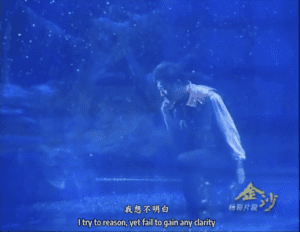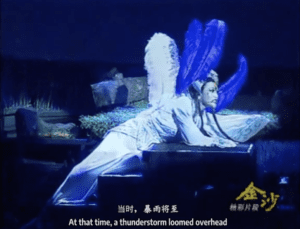My favorite film is Studie No. 7 (excerpt) made by Oskar Fischinger in 1931, Studie is a series of abstract studies that were synchronized to popular and classical music, and in a sense, they are the very first music videos. As for the artist, Oskar Fischinger, who was an expert in the field of abstract films and film making. The film was accompanied by sound on record, the soundtrack is Hungarian Dance no. 5, which is a symphony full of happiness and enjoyment. He used the etchings as the subjects of the films, aiming to pass on his understanding of the music. And at the same time, he was working on “new and different techniques, including multiple projector performances.” This film may be a way for him to promote his way of film making.
The synesthesia between the vision and the sound attracts me a lot. The artist used the flying and dancing lines and squares as tools to convey the visual performance following the rhyme and tone of the music piece, sometimes rush but sometimes silently rest. And I especially like how the lines turn into a circle, just like the butterflies flapping the wings in the sky along with the music. One issue is that the whole film is in black and white, thus, the synesthesia between colors and music is absent. Another thing is that there is a small gap between pitch point and the pause point of the moving lines and squares, which leads to a feeling of awkwardness.
References
Moritz. (2004). p. 22
Moritz. (2004). p. 207
unknown, http://www.oskarfischinger.org/OF_Filmo.htm
“Oskar Fischinger.” Wikipedia, https://en.wikipedia.org/wiki/Oskar_Fischinger#cite_note-3

